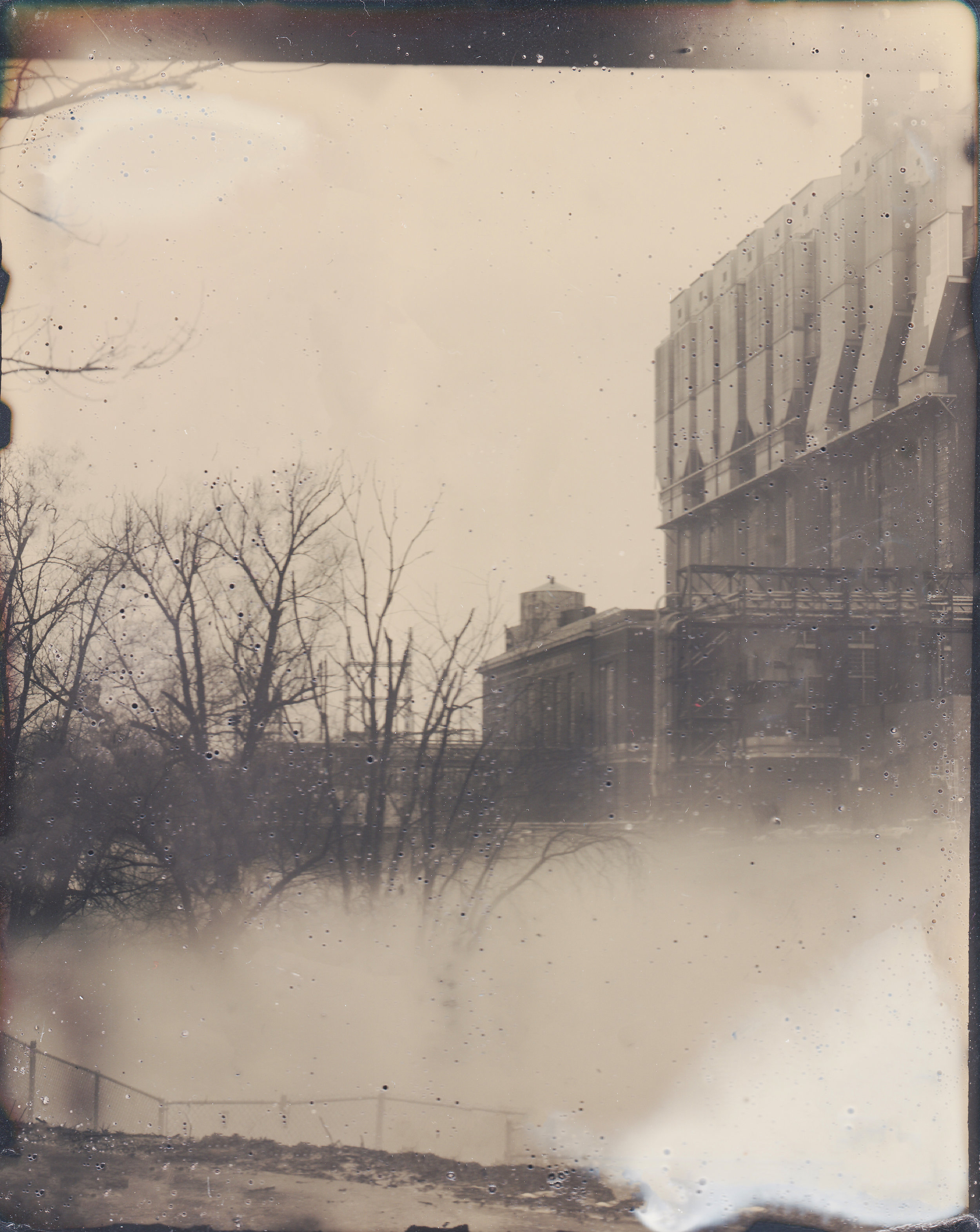So, to start if you are reading this blog you are more than likely either well aware of the tintype process or you don't know what it is in the slightest. In any case here's a super brief intro to the process.
Tintyping a very early method of photography that was created in the mid 1800's and was used commonly untill the invention of film. If you see a photo from the civil war or of your great-great grandpapy it was likely done in a similar manor. It involves layering photosensitive silvers on a glass or a metal (tin) plate (this is where the name tin-type comes from). The plates is then exposed much like film which creates a photo negative or positive image that can be used to make larger or smaller reproductions.
I had been gifted an old large format camera from my friend Bryan of Curbstaker who makes custom furnishings and gives old stuff a new life. He found it and didn't know what it was initially. Of course why would he, these old cameras have a odd looking lens on one end, a glass plate in the other, and a bellow like an accordion in the middle. This is all riding on a rail system and fold up into a large but dense package making it even tougher to distinguish as a camera. Not to mention these cameras havn't been commonplace for over a half century.
He asked me to check it out and determine what it was. I recognized it immediately from my photography studies. He graciously handed it over for me to experiment with (thanks again Bryan). It should be noted this camera is much more modern than the original wooden cameras i the 1800's, however the same priciples apply: a lens on one end, flexible bellows in the middle to allow for focusing, and a place to frame your image and insert the plate in the rear.
I didn't have any use for it at first. I looked into large format film for it and I didn't really see a huge need for it in my work and I couldn't find anyone locally to develop the film. I started thinking about how I would use this awesome old camera, and I thought back to images I had seen in a civil war museum. If I am going to create a darkroom, buy a bunch of chemicals, and spend a ton of time learning the processes I may as well do something that has a ton of extra charecter all while keeping a historical process alive.
I started researching and learning about the tintype process, I ordered a bunch of chemistry and dived into it when it arrived. I failed a lot to start, I mean a lot. Out of my first 50 exposures, only about 5 was decent, not that good, just kind of ok. The rest either had no image or were showing something indistinguishable.
Start to finish each image takes about 20 minutes to create so I had to learn to be patient and pay attention to every detail before pressing the shutter. There is no "hold on let me snap a better one, this didn't turn out very well" you have to get it right the first time to avoid wasting the precious materials needed to make a new plate and the time spent prepping and processing.
To add to the complexity the materials used are far less sensitive to light in compairson to film and especially digital sensors. on my digital camera it isn't uncommon for me to shoot in low light situation using an ISO (a measure used to express a camera's light sensitivity, similar to film speed) of 6,400 or 12,800 this process is rated at a value range of ISO .5 to 1. This means a HUGE amount of light is needed to make the image and it can not be metered to give proper exposure times using modern mechanical light meters. Everything is done based off of past experience in specific light conditions.
I kept going and studying my chemistry, reviewing notes, and finding alternative processes and chemicals. Then one day it just worked, the culmination of my efforts paid off and I finally had some great stuff coming out consistently.
I can't say that this process will replace my high-end digital camera, but it will certainly add to my creative arsenal.
For me the appeal is in the process I love the physical process of creating the image. It's very primal and hands on in today's digital world it feels great to do things that are time consuming, meticulously planned, and completely methodical. It isn't something you are rewarded for instantly and you will be humbled often by failures. It has become a sort of meditation for me, in my fast-paced modern life I am drawn to things that require me to slow down and just live in the moment for a bit.
If you are interested in trying the process out for yourself here is my advice. Read as much as you can before diving in and be prepared for failure. It's tough to start, but rewarding in the long run! Feel free to reach out if you have questions or need encouragement!
If you are interested in a tintype of yourself loved ones, or something that is special to you please visit my contact page and we can chat!
large format camera
Modern Tintype Portrait
Don't forget to follow my photographic journey on instagram where I post daily!



















